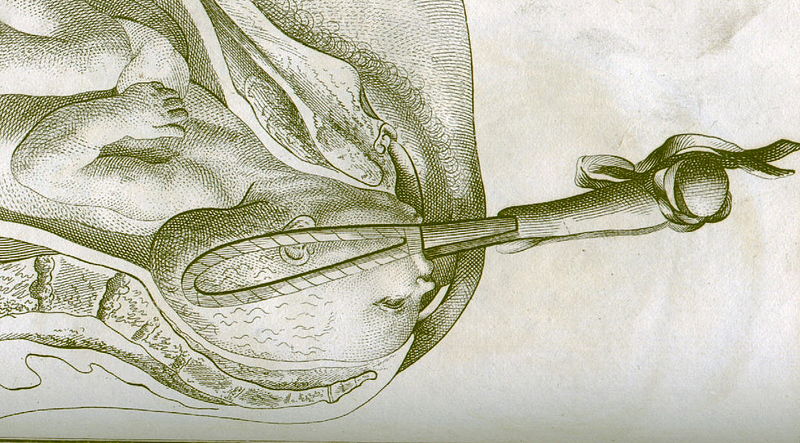Brief and interesting history from a post at Priceonomics about the invention of childbirth-easing forceps in the 16th century, and the skullduggery employed by William Chamberlen, the surgeon behind the innovation, to maximize his profits:
“In the Chamberlen family’s day, members of the Catholic church and midwives helped women through the dangerous process of childbirth. The tools used were crude. If they used any tools at all, they used crochets and hooks in gruesome operations to remove the corpses of dead infants from their mothers, along with nooses of string. The primary goal of what passed for obstetric medicine was to keep the mother alive — preserving the health and life of an infant was beyond the available level of technology and knowledge.
At the height of the European civil wars following the Protestant Reformation, a family of French Huguenots (followers of John Calvin, the theologian and former lawyer) developed a contraption that, in skilled hands, could deliver newborns, even in the case of an obstructed birth: forceps.
William Chamberlen, originally an apothecary and barber-surgeon, fled France as the Bourbon monarchy began to impose regulations banning the employment of Protestants in the professions, which eventually culminated in the forced exile of the Huguenots to Protestant countries throughout Europe. He took his family to England — where he would soon invent his marvelous device, and his descendants would eventually serve kings and queens as trusted surgeons.
When a difficult birth presented itself to the Chamberlens, they would take the utmost care to obscure their methods. They ushered out the expectant mother’s family and either applied a blindfold to the woman in labor or extracted the infant under a heavy sheet. Few were permitted to know the secret of forceps, and none saw the designs for the devices that they used. Their reputation for results eventually preceded them. The original device was made of iron, with the tongs likely covered by leather. By family tradition, the Chamberlens would carry the tools in an ornate box, inlaid with gold.
The family used secrecy to reap substantial profits from their invention. “

